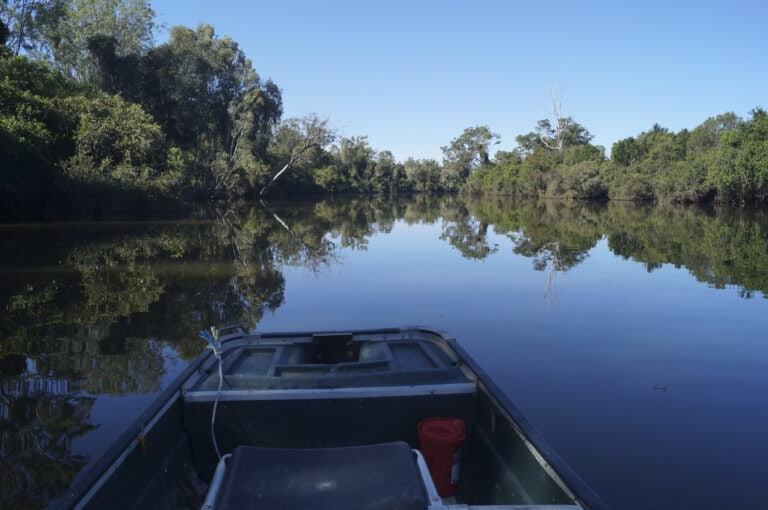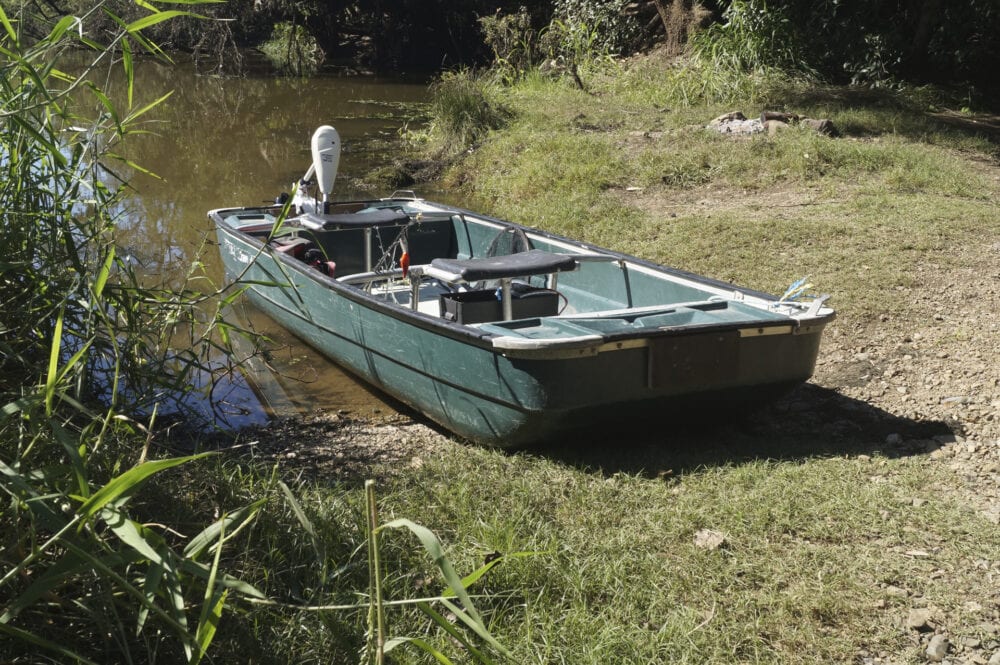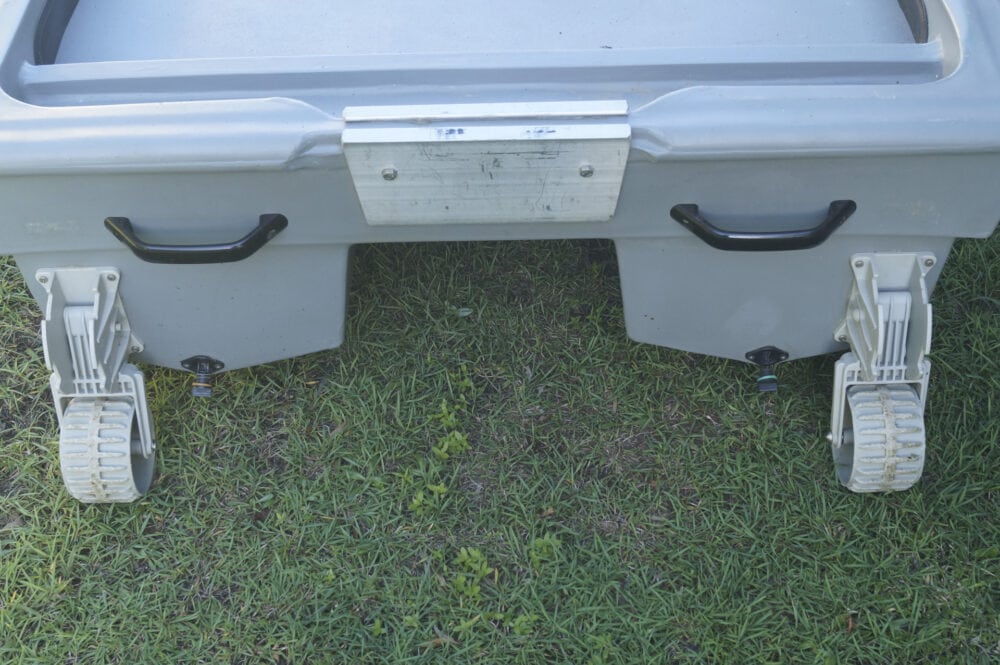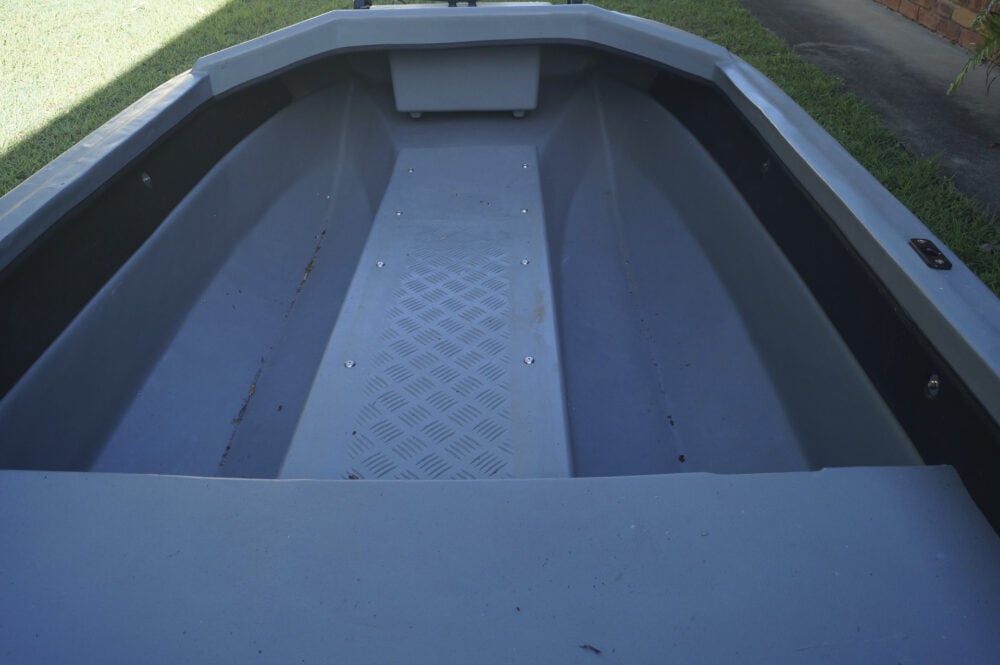The Tiny Boat Addiction Grows – By Dave Magner
Not that long ago, I was checking out one of the local garage sales when I stumbled across a small plastic dingy for sale. Even though I wasn’t really looking for another boat at the time, I couldn’t help but think of all the relatively untouched waterways such a small craft might open up, so I just had to buy it. For once, the crazy ideas in my head came true and I’ve been absolutely hooked on the whole tiny boat concept ever since.
That initial purchase was a 2.4 metre Finn Spindrift. I hadn’t heard of Finn Boats before I got hold of mine, but a bit of Googling soon revealed that they are an Australian made product, which come from over in WA. While they aren’t as well known or popular as Bundaberg’s famous Polycraft boats, they share a similar production method, being rotomoulded from polyethylene and are therefore as tough as old boots.
So far, I’ve mainly used the Spindrift to fish the local creeks and smaller estuaries and I’ve absolutely had a ball chasing species like bream, flathead and grunter out of it.
While I originally thought having easy access to sheltered waterways might make a great fall back option for when the wind made offshore trips impossible, I quickly realized that this style of fishing is way better than a backup plan.
In fact, it wasn’t long before I did a complete backflip and found myself planning my offshore trips around the best tides for creek fishing.
As good as the Spindrift is, after using it quite a number of times, I’ve come to realise that the catamaran layout does have its drawbacks in such a small boat. While it is nice and stable at rest, the tunnel hull means there’s not a lot of flat floor for me to stand on. If you have a look at the photos of the floor layout hereabouts, you should be able to see how little foot room there is.
Basically, the only place I can stand is with one foot on either side of the raised seat which runs down the centerline of the hull. Even then, I’ve had to lay a short section of ply down, just to give me a flat surface to stand on so that my ankles get a bit of relief on longer trips.
While I probably could stand on the seat, doing so adds another 30cm of height and I find it raises my centre of gravity above where I’d like it to be. If you know anything about physics, you’ll realise that the higher your centre of gravity is, the less stable things become. To be perfectly honest, while I’ve tried standing up there a few times, I’m too old and clumsy to feel completely comfortable perched on top of it.
Standing with one foot directly over each hull works best, as it keeps my centre of gravity low and well spread. However, the problems begin the moment I need to turn around and face the other way. Now I’m never going to be a jockey, being well over 6 foot tall and weighing in around the hundred kilo mark. As I’ve said, the hull copes with my weight just fine when it’s evenly distributed, but the moment I try to both feet on the same side, things start tipping.
The only way I’ve found to feel completely comfortable turning around has been to sit down on the middle and spin around through 180 degrees before standing back up. It’s a minor inconvenience really, but it must appear quite comical to anyone watching when I have to sit down and spin around just so I can face the other end of the boat.
While the Spindrift is quite good to fish out of, it’s definitely not a purpose designed fishing boat. In fact, it’s marketed as a tender or a survival raft, and it has quite a few safety features built into it that make it perfect for those purposes. While having a safe little boat is always a bonus, I could see that fishing out of it would always be a bit of a compromise. This left me wondering if there might be a more comfortable option out there for me.
Coleman Crawdad
As it turns out, there was. A few weeks ago, I was offered a pre-loved (and well used) Coleman Crawdad for the bargain price of a few hundred dollars. Knowing how much fun tiny boats are, I just couldn’t say yes quick enough.
If you aren’t familiar with them, Crawdads were made back in the 1980 and 90s out of a plastic which Coleman refers to as their Ram X material. The hull is held in shape by an inner skeleton of aluminum poles, which also provide the support for the two raised seats. I guess you could say they are basically a poly version of a 10 foot punt. The only real difference is that Crawdads are squared off at both ends. Incredibly, you can put up to a six horsepower outboard on either the front or the back of the boat depending on how you feel at the time. I’m not sure why you’d want to drive one backwards, but apparently you can if you are crazy enough.
Like many great things of the past, Crawdads are no longer in production and the existing ones well and truly fall into the vintage category. If you check out the Coleman Crawdad modification and owners group on Facebook, you’ll see that Crawdads still have a real cult following. There must be something about them with so many people keen to invest the time and money into restoring them to their original glory.
As we know, the yanks really love their Jon Boats and the Crawdad is designed along the same lines. It measures just over three metres long and is a bit over a metre wide. Despite its relatively skinny profile, the flat bottom makes it fairly stable and it’s actually a very efficient platform. Like the Spindrift, it floats in next to no water. It’s highly maneuverable and the 55 pound thrust electric gets it moving as fast as I need it to.
The big advantage that the Crawdad has over the little cat hull, is that it has a completely flat floor. That means I can stand right on the mid-line of the boat and moving or turning around is easy as. It also allows me to fish right round the boat, rather than being restricted to casting out the back or the front. To be fair, it’s not quite as stable as the Spindrift, but it’s more than steady enough as long as I’m not trying to do anything stupid.
As it’s just another 60cm longer, it might not sound much bigger either, but that extra half metre or so makes a huge difference. With boats, any addition in length goes in the middle, not on the end.
The flat deck really makes it feel a lot bigger too, and the fishing friendly design just seems to provide a lot more usable space.
Amazingly, with the help of a canoe trolley, it’s much easier to move around than the smaller Spindrift, or even my Hobie Pro Angler.
Flexibility
Anyway, I took the Crawdad out for it’s first real fishing trip recently, and even that one short trip proved to me yet again how much flexibility such small craft offer. You see, when I arrived at my chosen launch point into Raglan Creek, I found a young family had set up their camp, right in front of the only bit of bank that you can put a boat in from.
Now, if I had a regular boat that needed to be launched from a boat trailer, this would have been a disaster. Their tents were right in front of an unformed ramp, and with their car and trailer parked alongside, there wasn’t room for me to get my car anywhere near the water.

Technically, two anglers can fish out of the Crawdad, but it’s probably a one and a half person (1 adult, 1 small child) vessel.
With the Crawdad, I simply parked back up the track a bit, put my kayak trolley under the hull, loaded my gear in and walked the boat down to the water’s edge and launched. I was able to squeeze in beside their tent with a minimum of fuss and no need to ask them to move anything. While the fishing on that particular trip was pretty ordinary, at least I was still able to get on the water.
Admittedly, it’s still early days for the Crawdad and I’m bound to find some drawbacks once I’ve used it a bit more. So far however, it seems to be just about the perfect tiny boat. It’s small and light enough for me to carry if necessary. It can be bank launched anywhere you can fit a canoe in, and it’s fun and easy to fish out of. With any luck, you’ll be seeing plenty of photos of fish caught out of my little Crawdad in future articles.








